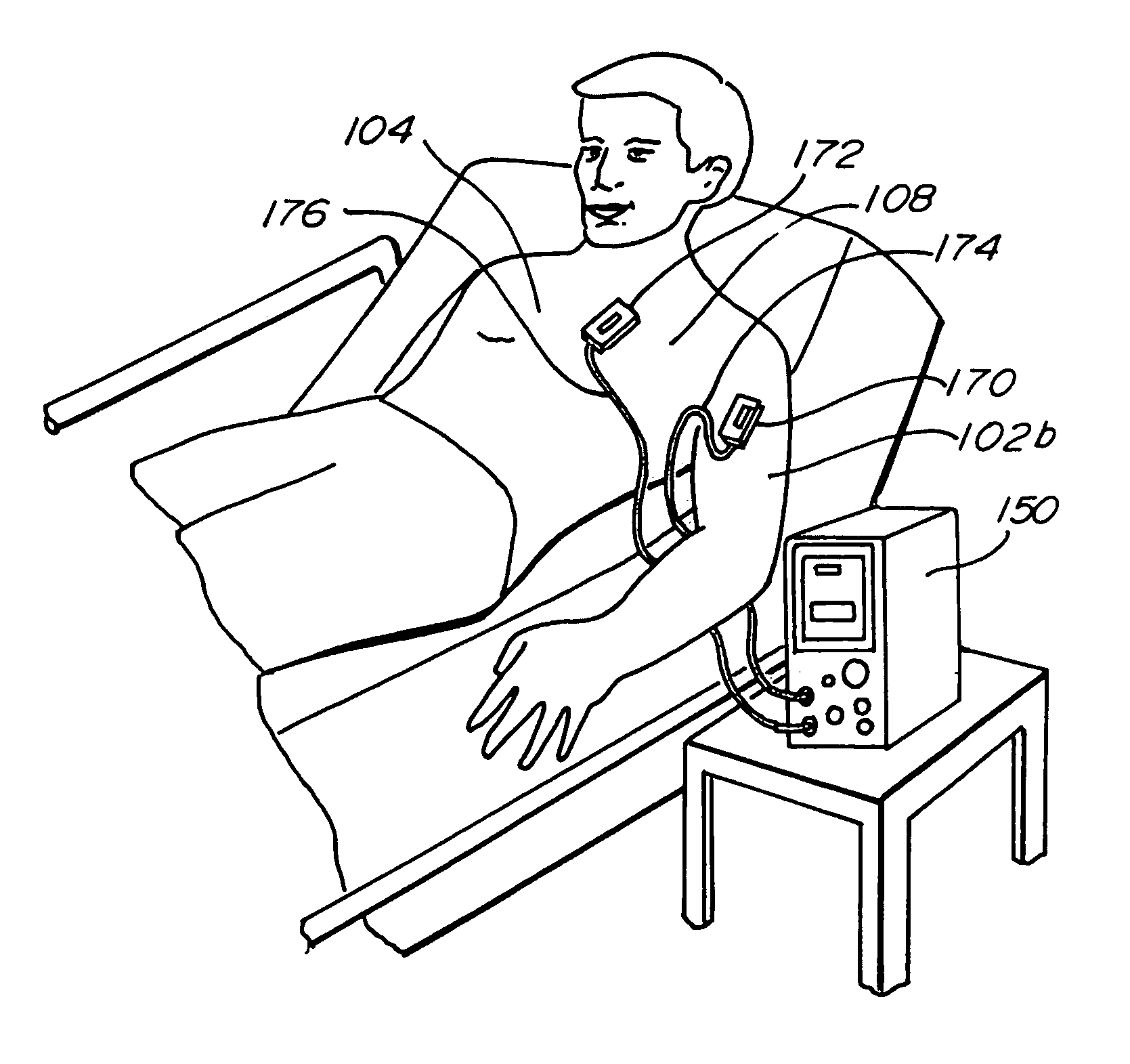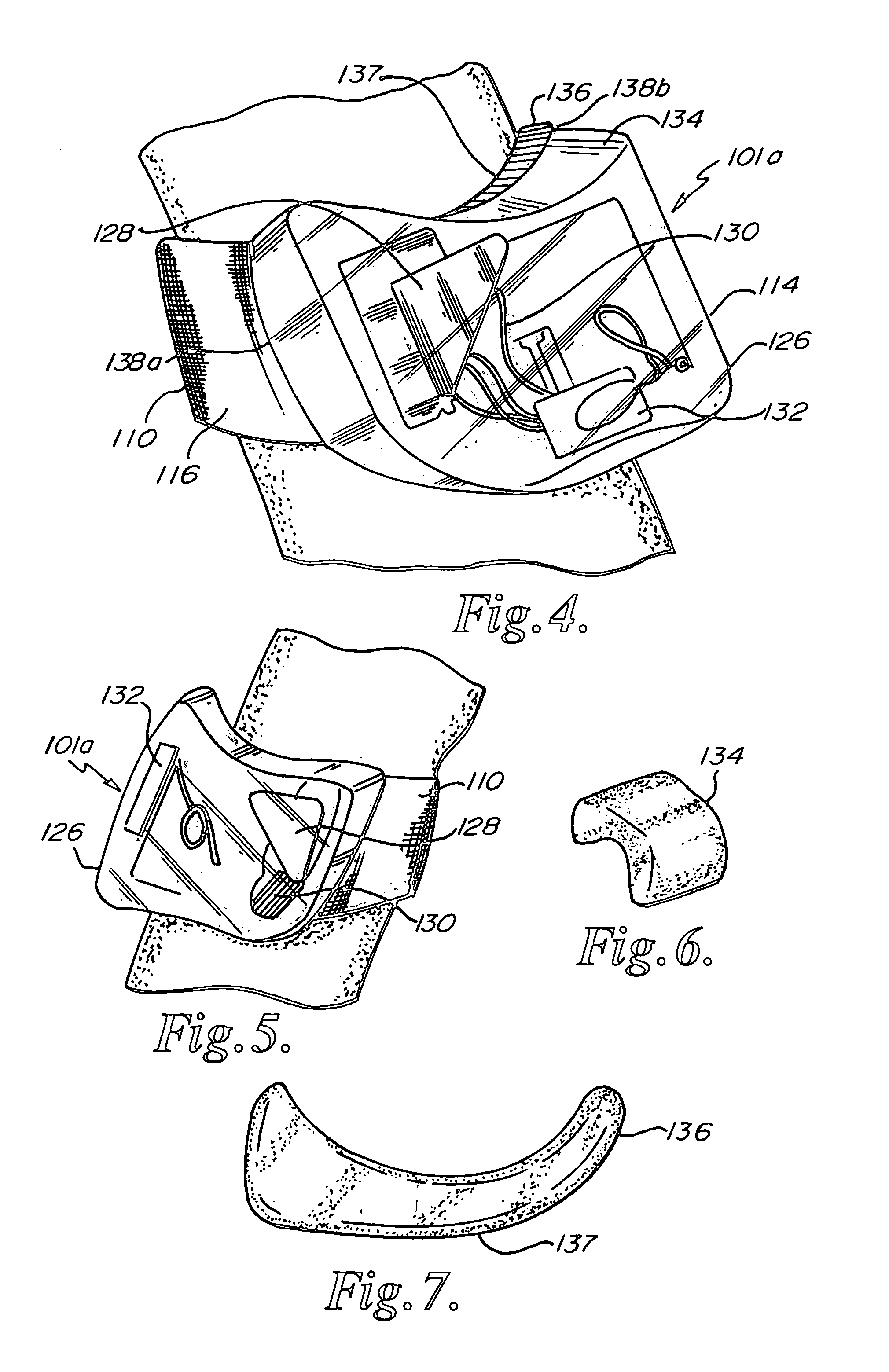Method of applying electrical signals to a patient and automatic wearable external defibrillator
a technology of electrical signals and wearable devices, applied in the direction of heart defibrillators, external electrodes, therapy, etc., can solve the problem of no longer being able to effectively pump oxygenated blood to the brain and other vital organs, and achieve the effect of notably reducing the actual transthoracic impedance encountered
- Summary
- Abstract
- Description
- Claims
- Application Information
AI Technical Summary
Benefits of technology
Problems solved by technology
Method used
Image
Examples
Embodiment Construction
[0031]The present invention includes systems, apparatuses, and methods for reducing the maximum discharge requirements associated with current automated external defibrillators. Generally, an automated external defibrillator includes a pair of electrodes for delivering an electrical defibrillation pulse to a patient suffering from Sudden Cardiac Arrest. As described herein, positioning at least one electrode, be it configured as an adjustable strap device, an adhesively applied electrode assembly, or a manually positioned electrode pad, on a limb proximate the torso significantly reduces the maximum discharge requirement of the automated external defibrillator through the combination of reduced transthoracic impedance as well as conduction of the electrical defibrillation pulse to the cardiac muscle through the arterial and / or veinous systems in proximity to the limb. Electrodes can be selectively placed on either the arms or legs of a patient in any appropriate position, most prefe...
PUM
 Login to View More
Login to View More Abstract
Description
Claims
Application Information
 Login to View More
Login to View More - R&D
- Intellectual Property
- Life Sciences
- Materials
- Tech Scout
- Unparalleled Data Quality
- Higher Quality Content
- 60% Fewer Hallucinations
Browse by: Latest US Patents, China's latest patents, Technical Efficacy Thesaurus, Application Domain, Technology Topic, Popular Technical Reports.
© 2025 PatSnap. All rights reserved.Legal|Privacy policy|Modern Slavery Act Transparency Statement|Sitemap|About US| Contact US: help@patsnap.com



